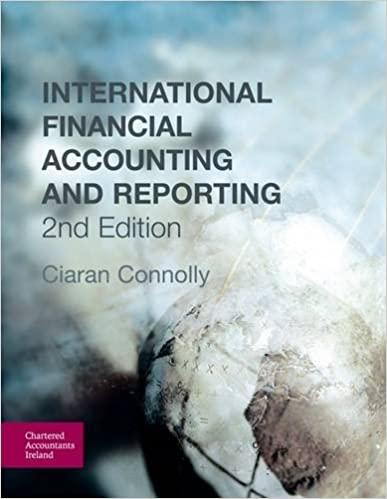Question
WAREHOUSE- questions regarding the property transactions On 7-1-2022, Mr. Kupka acquired a warehouse in the Silver Terrace district of San Francisco for $4,333,000. He financed
WAREHOUSE- questions regarding the property transactions
On 7-1-2022, Mr. Kupka acquired a warehouse in the Silver Terrace district of
San Francisco for $4,333,000. He financed this by paying $1,083,250 and
financing the remainder with a conventional commercial loan. The purchase
agreement provided that the seller would retain possession of all or a portion of
the premises rent-free on an as-needed basis over the 12-month period
commencing 7-1-2022, at the end of which the seller would completely abandon
the warehouse. Once any portion of the premises was abandoned during this 12-
month period, the seller forfeited any further right to its possession. (I.e., Mr.
Kupka would be able to take possession of the abandoned portion to use as he
saw fit.) As portions of the building were abandoned, Mr. Kupka became
obligated to pay the seller an amount equal to $1.50 per square foot per month
multiplied by the number of months remaining in the 12-month period at the time
of abandonment.
- To the extent the seller remains in possession of the property, he is responsible for all expenses of operation e.g., utilities, maintenance and insurance. As owner, it is Mr.
Kupka responsibility to pay for taxes and debt service. Mr. Kupka bear the risk of loss in the case of a casualty. If the seller is involuntarily forced to abandon the premises, I'm still obligated to pay the abandonment refund. Further, Mr.Kupka collect any insurance proceeds in case of loss.
- During the period from 7-1-2022 through 12-31-2022, Mr.Kupka didn't receive any income from the property because the seller hadn't yet vacated any portion of the warehouse. During that time, the seller paid for the following expenses:
Utilities 9,500 Insurance 7,500 Maintenance 4,000 Misc. 1,000
Total Operating Expenses 22,000
(The seller paid for the utilities and maintenance costs directly, and reimbursed me for the remaining expenses in accordance with the net lease.) Mr.Kupka paid for interest on the mortgage, ($72,800) and property taxes, ($29,200). Of these amounts, all but the utilities and maintenance are expenses for which Mr. Kupka directly liable. (The maintenance was routine in nature, something the seller was responsible for under the terms of the lease.)
More info provided:
- The warehouse comprises 36,500 square feet, and $1.50 per square foot is fair market rent in the area. (This amount contemplates a net lease of the property.)
- Mr. Kupka acquired title to the warehouse at the time of closing.
- On the property tax bill, the assessor employed an 80/20 building to land ratio. It also indicates that the assessed value is $4.9 million
PART I
Analyze each individual transaction. As part of your analysis, you should perform
each of the following tasks for each transaction:
a) Where appropriate, (hint: the lease to Mr. Ty and the warehouse purchase), determine the true classification of the transaction (i.e., its economic substance) for income tax purposes.
b) Calculate the amount of realized gain or loss respecting each transaction. (That necessarily means you must determine Mr. Kupkas amount realized for each disposition and his adjusted basis in the asset being disposed of. Be sure to calculate depreciation as necessary, and to adjust your basis accordingly.)
c) Determine the amount of recognized gain or loss on
c) Determine the amount of recognized gain or loss on each transaction.(Remember the golden rule: generally realized gain or loss must be recognized unless there is a rule of nonrecognition that applies. The only transaction where nonrecognition comes into play is the exchange between
Mr. Kupka and Ms. Smart. (Dont assume that Mr. Kupka qualifies for nonrecognition treatment. You must explain why he does or doesnt!)
d) Determine the amount of ordinary income generated by the operation of Mimis Furniture & Appliance and the amount of Mr. Kupkas rental income from the warehouse and the lease with Mr. Ty for 2022.
e) Determine the character of recognized gain or loss from each transaction (as (i) ordinary income, (ii) 1231, (iii) STCG/L, (iv) LTCG/L).
f) With respect to any assets Mr. Kupka has acquired in these transactions, determine Mr. Kupkas basis and holding period in the acquired property.
For purposes of your analysis:
Assume that all parties with whom Mr. Kupka dealt are unrelated parties
for income tax purposes unless the facts clearly indicate otherwise.
Assume that Mr. Kupka is a solvent taxpayer.
Calculate any depreciation deduction available to Mr. Kupka where
required for your analysis.
Ignore the impact of 199A.
Ignore the OID rules.
Ignore the impact of California sales taxes.
Step by Step Solution
There are 3 Steps involved in it
Step: 1

Get Instant Access to Expert-Tailored Solutions
See step-by-step solutions with expert insights and AI powered tools for academic success
Step: 2

Step: 3

Ace Your Homework with AI
Get the answers you need in no time with our AI-driven, step-by-step assistance
Get Started


